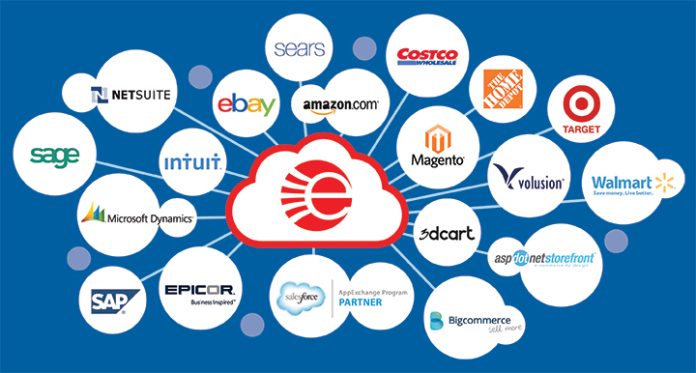Microservices have become an essential part of the modern digital landscape. As businesses strive to meet customer demands with agile solutions, it’s no wonder that microservices are becoming increasingly popular. Microservices offer a scalable, flexible approach to software development that enables companies to rapidly develop services and features without requiring extensive coding effort.
With this in mind, it’s easy to understand why incorporating microservice architecture into e-commerce platforms has become so popular. Let’s take a closer look at how you can incorporate microservices into your e-commerce platform.
Table of Contents
What are microservices?
Before diving into how we can incorporate microservices into our e-commerce platform, let’s quickly define what they are and how they work. Microservices are architecture that brings flexibility to software development and deployment. By utilizing this approach, applications can be broken down into small, independent services that communicate with each other. For end-users, this means that the functionality of an individual service can be adapted quickly and effortlessly without needing to be concerned about the application’s overall health.
Developers also benefit from microservices as they can get updates faster by independently developing self-contained services. Microservices are revolutionizing how developers and organizations think about building software, allowing for scalability, adaptability, and quicker launches.
Benefits of microservices
Now, let’s look at some of the benefits of incorporating microservices into your e-commerce platform. The most apparent benefit is scalability; because each service can be developed and updated independently, you won’t have to worry about coding everything from scratch when expanding your e-commerce platform.
Additionally, microservice architecture provides flexibility in how the different services can be used together. This makes integrating new services and features more accessible without needing significant coding effort.
Finally, microservices offer enhanced security since the individual services are isolated from one another and can be locked down more quickly if needed.
Drawbacks of microservices
While microservices show promise in many industries, they have drawbacks. Moving to a microservice architecture can be complex and time-consuming because it involves breaking down an application into its component services, which may require significantly reworking existing code.
Additionally, debugging problems can become challenging in this architecture since each distributed system has more than one codebase, leading to greater complexity and time-intensive debugging efforts. Microservices also require organizations to change how they think about how software is developed and released; with monolithic structures; it is easier for developers to manage their security concerns through standardized templates rather than having individual service teams assess the risk before publication.
These complexities demonstrate drawbacks when adopting microservices, even if the long-term rewards may outweigh the short-term issues.
How to incorporate microservices into your e-commerce platform
So now that we know the benefits of incorporating eCommerce microservice architecture into our e-commerce platform, let’s dive into how you can do this. The first step is to create an architecture blueprint for your e-commerce platform. This will include defining the services you need and the functionality each should have.
Once this is done, you can start developing each service individually. It’s essential to remember that each service should be developed as a small, self-contained unit with its API. This will ensure that each service is independent and can be updated without impacting the other services in your e-commerce platform.
How can you determine if microservices are the right solution for your platform?
One of the best ways to determine if microservices are the right solution for your platform is to analyze your current setup and identify where there might be room for improvement. Ask yourself: Are there any areas of my platform that could benefit from improved scalability and flexibility? Would a more modular approach prove advantageous here?
Once you’ve assessed your platform and determined that introducing microservices will likely resolve your issues, it’s time to start exploring your options further. You can investigate existing technologies, research existing microservice architectures, or enlist help from an expert consultant who can guide you through the process. Regardless of which direction you choose, carefully selecting the right solution for your platform will ensure long-term success.
Tools and technology that make it possible
With the emergence of microservices architecture, tools and technologies have made it possible to develop, deliver, deploy and monitor modern applications faster than ever. This architectural style empowers continuous releases, enabling developers to turn their ideas into usable software quickly and efficiently.
Popular tools such as container platforms such as Docker & Kubernetes allow development teams to isolate services, so they are deployed in the appropriate environment. In addition, cloud-based solutions such as AWS Lambda also present a convenient way for development teams to run code without having to manage any of its underlying infrastructure components.
Combining these specialized tools with advances in automation and orchestration has allowed microservices developers to drive innovation like never before.
All things considered
Undoubtedly, microservices in e-commerce have become increasingly popular due to their scalability and flexibility. By breaking down applications into small, self-contained units with their APIs, organizations can ensure that individual services remain independent and secure. This makes integrating new services and features much easier and more efficient without coding everything from scratch.
While microservice architectures pose some drawbacks, such as increased complexity during debugging, they are still a viable solution for many e-commerce platforms. To determine if they’re right for you, analyze your current setup to identify areas where microservices may be beneficial. With the exemplary architecture in place, you can enjoy the enhanced scalability, flexibility, and security that microservices provide.








